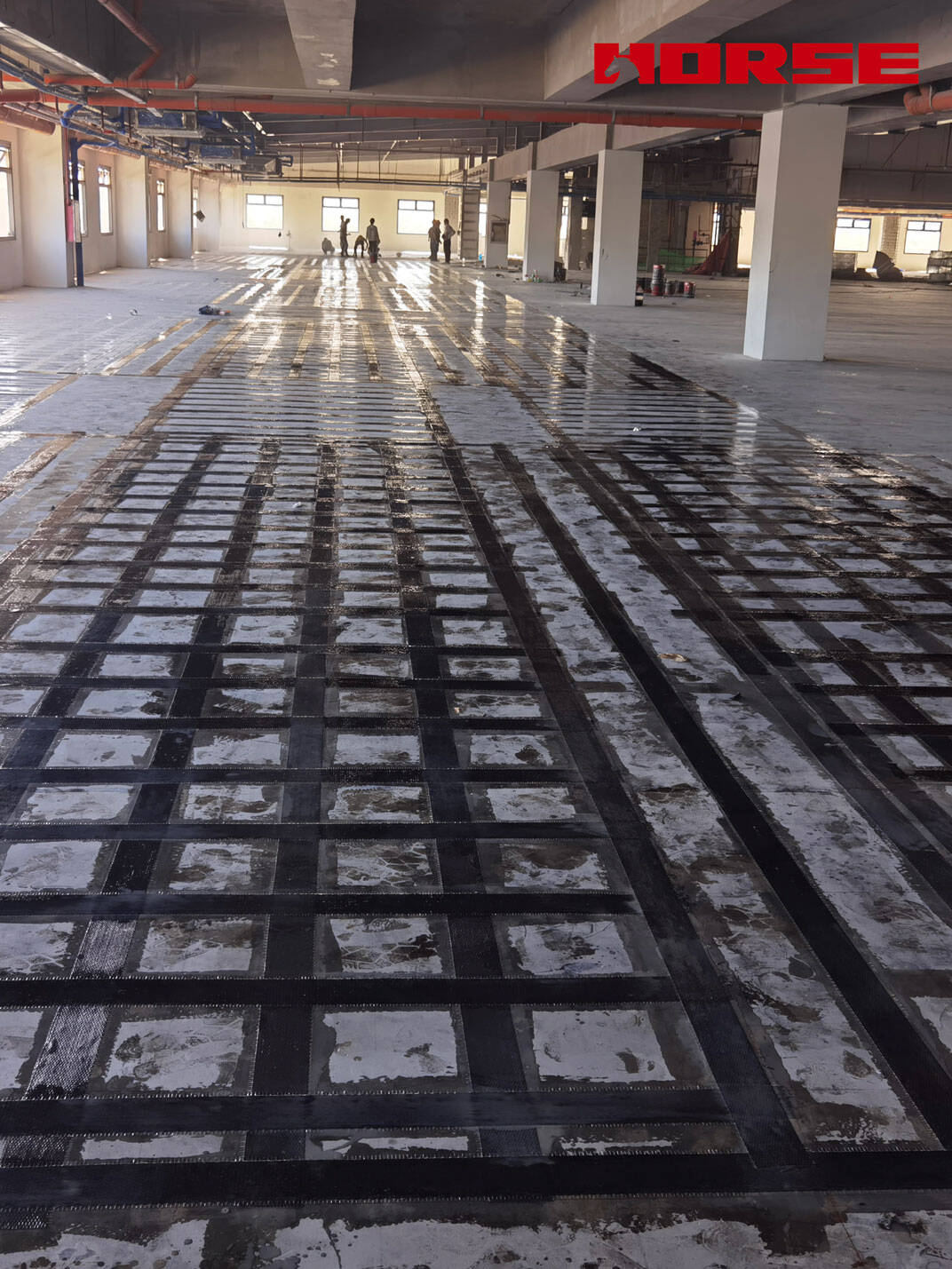Solutions
Horse Construction offers full range of structural strengthening materials with technical supports, documentation supports, products supports, project supports.
Can CFRP Be Used To Solve Long Term Deflection Problems Of A Slab With Substandard Concrete Strength?

Yes
CFRP (Carbon Fiber Reinforced Polymer) can effectively address long-term deflection issues of slabs with substandard concrete strength, especially when the concrete’s compressive strength is insufficient to resist service loads or control creep/shrinkage-induced deflection.
here’s the core reasoning:
1. CFRP boosts flexural stiffness (EI) to control deflection
Long-term deflection is directly related to a slab’s flexural stiffness. Substandard concrete has a lower modulus of elasticity (Ec) and poorer creep resistance, leading to reduced inherent stiffness. CFRP has an extremely high modulus of elasticity (E_f, ~230–400 GPa, 5–10 times higher than concrete) and tensile strength. When externally bonded to the slab’s tension face, it forms a composite section with concrete, significantly increasing the overall stiffness (EI) of the slab. This directly reduces the slab’s deformation under service loads, addressing both short-term and long-term deflection.
2. CFRP compensates for concrete’s time-dependent weaknesses
Substandard concrete exhibits more pronounced creep (time-dependent deformation under sustained load) and shrinkage, which exacerbate long-term deflection. CFRP is nearly creep-free and dimensionally stable over time. By supplementing the slab’s tensile capacity, it limits the extent of concrete cracking—cracks in substandard concrete accelerate creep and shrinkage, while CFRP’s bridging effect reduces crack width and propagation. This slows down the slab’s time-dependent deformation, keeping long-term deflection within allowable limits.
3. CFRP works compatibly with substandard concrete (with proper preparation)
CFRP’s external bonding method avoids the need to alter the existing concrete structure extensively. Even with lower concrete strength (as long as it meets the minimum bond requirement, typically ≥15 MPa), proper surface preparation (e.g., grinding, crack repair, and using compatible adhesives) ensures effective stress transfer between CFRP and concrete. Unlike traditional strengthening methods (e.g., adding concrete overlay), CFRP adds minimal weight, avoiding further overloading the already weak concrete slab.
You can find anything here you are in need of, have a trust trying on these products, you will find the big difference after that.